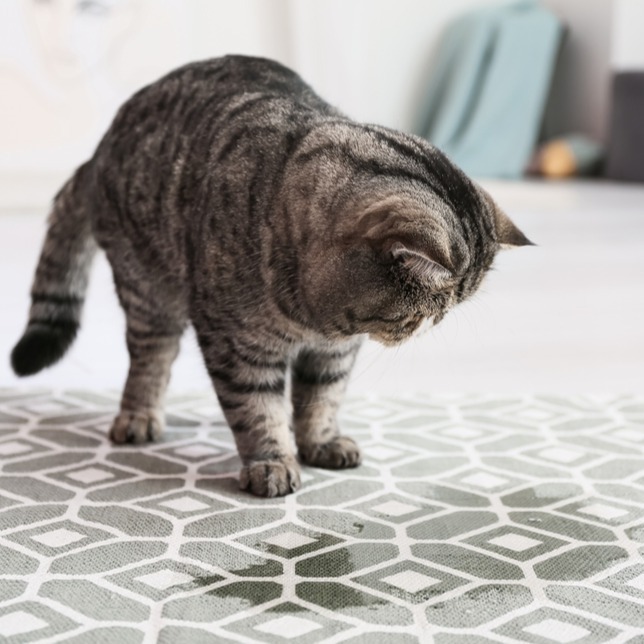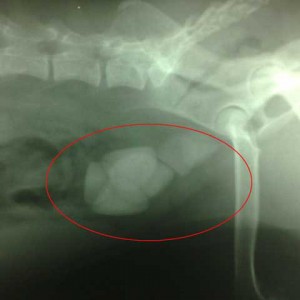Urinary tract infection (UTI) in cats
What is urinary tract infection (UTI)?
A urinary tract infection (UTI) is an infection that occurs anywhere along the urinary tract, for example, the bladder, kidneys, ureters, urethra and/or prostate gland (male cats only). Typically, a UTI results when bacteria from the skin or the gastrointestinal tract find their way up the urethra and lodge in the bladder. Urine in the bladder is sterile, but if bacteria manage to lodge there, they can grow and reproduce, causing an infection.
Although UTIs are fairly uncommon in young cats, the incidence is much higher in older cats, particularly those over the age of 10 years. UTIs in male cats are far more dangerous because male cats have a narrower urethra than female cats. When a UTI occurs, the bacteria can cause a change urine pH (acidity / alkalinity). High pH, meaning that the urine is too alkaline, can lead to the formation of crystals in the urine, which can become lodged in the narrow urethra of a male cat, causing a blockage. A blocked urethra is deadly and should be treated immediately by a veterinarian.
Infection of the bladder by bacteria is also known as “bacterial cystitis.” Sometimes the bacteria migrate from the bladder to lodge in the kidneys, causing a kidney infection called “pyelonephritis”. Some cats will develop bladder stones (“uroliths”) with or without a UTI, which creates additional health issues. Recurrent urinary tract infections can contribute to the development of feline lower urinary tract disease (FLUTD).
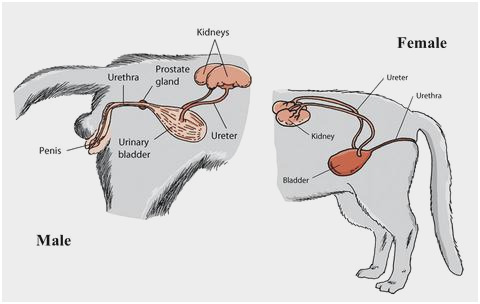
Source: http://getreadyrossvalley.org/wp-content/uploads/2018/09/cat-kidney-anatomy-lovely-urinary-health-of-cats-vecado-of-cat-kidney-anatomy.jpg
Symptoms of urinary tract infection (UTI) in cats
There are several symptoms of painful or difficult urination that may signify a UTI. However, these can vary widely between cats, and can range from mild to extremely severe. Additionally, cats are often asymptomatic as they are able to mask their symptoms when ill, making it difficult for their owners to detect any signs of an illness.
Some of the typical observable symptoms of a UTI are:
- Passing small amounts of urine (pollakiuria)
- Abnormally frequent attempts to urinate
- Straining to urinate (stranguria)
- Blood in the urine (hematuria)
- Crying out or whining while urinating
- Difficulty urinating (dysuria)
- Incontinence or dribbling of urine
- Cloudy urine
- Licking / grooming the genitals excessively
- Stronger than normal urine odour
- Urinating outside the litter box and in other inappropriate places
- Visiting the litter box more often than usual
- Spending a longer than usual amount of time in the litter box
- Visiting the litter box but not leaving any deposits
- Drinking more water than usual
- Not eating as much as usual (inappetence; anorexia)
- Fever
- Behavioural changes, such as depression, increased irritability or lethargy
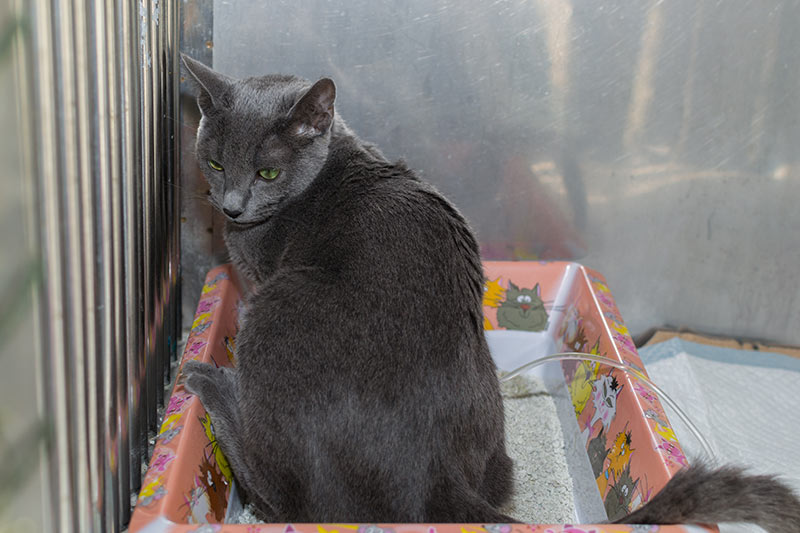
Causes of urinary tract infection (UTI) in cats
Bacteria, fungi, parasites and even viruses can cause infections of a cat’s urinary tract. These microorganisms, most commonly bacteria from the skin, enter the body via the urinary tract, travel up the urethra and typically settle in the bladder.
The primary bacteria involved in feline UTIs are Escherichia coli (E. coli), Staphylococcus, Proteus, Chlamydia, Enterococcus, Klebsiella, Streptococcus, Enterobacter and Pseudomonas, with E. coli being the single most common pathogen in both acute and recurrent UTI in dogs as well as cats. Occasionally, microorganisms other than bacteria are responsible, including mycoplasma, viruses, algae and fungi. Although much less common, most fungal UTI in dogs and cats is caused by Candida spp.
Bacteria simply ascending the cat’s urinary tract without any reason or predisposing condition is uncommon, but not impossible. Some cats have “idiopathic” UTIs, meaning that the cause of their infection is unknown.
In most cases, the predisposing or contributing factors for cat UTI may be one or more of the following:
- Age plays a role in the development of a cat UTI, with the incidence being much higher in older female cats, particularly those over the age of 10 years; in young cats, incidence of UTI is low.
- Cats with compromised immune systems or other health complications have reduced defences for fighting infections, and hence have a greater incidence of UTI, than the general population. Underlying medical conditions associated with feline UTIs include:
- Diabetes mellitus
- Renal failure
- Hyperthyroidism
- Feline leukemia virus (FeLV)
- Feline immunodeficiency virus (FIV)
- Cats who have bladder stones (uroliths) are prone to recurrent UTIs; it is essential that bladder stones are removed or dissolved in order to restore bladder health.
- Stress is thought to play a role in developing a cat UTI; cats are typically creatures of habit and easily become stressed from a change in routine, a new baby or pet, or a move to a different house.
- Elevated urine pH from any cause creates a bladder environment that is primed for bacterial overgrowth.
- Certain allergies (also called “immune-mediated hypersensitivities”) can contribute to bladder irritation, inflammation and infection.
- A more recent cause of recurrent UTI is the emergence of bacteria resistant to antibiotic drugs (antimicrobials).
- Long-term administration of steroid medications can suppress the immune system, increasing a cat’s chances of contracting urinary tract infections.
- Free-roaming outdoor cats are more likely to develop persistent UTI, largely because they tend to have veterinary check-ups less frequently than indoor cats, and owners are less likely to observe any symptoms.

How is urinary tract infection (UTI) in cats diagnosed?
Cat owners should schedule an appointment with their veterinarian if they notice any unusual changes in the cat’s urinary habits. However, many cats do not show any specific signs of having a UTI, and they often go undiagnosed. Therefore, it is highly recommended for cats to have an annual physical examination and urinalysis, so that silent urinary tract infections can be diagnosed and treated as promptly as possible. Underlying medical and/or anatomic conditions that predispose cats to developing UTIs must also be identified in order to prevent persistent or recurrent infections.
Diagnosing a bladder infection is relatively straightforward. A urine sample is taken directly from the bladder with a needle and syringe and is then examined under microscope in a process called “urinalysis”. If bacteria are observed, a UTI is diagnosed. In order to identify the specific type of bacteria, a urine culture is usually performed, where the bacteria are grown in a laboratory and then tested against various tiny samples of commonly used antibiotics. This identifies the most effective antibiotic to use for treatment.
If there are no bacteria in the urine sample, abdominal x-rays may be recommended to look for bladder stones. Cats who have bladder stones are prone to recurrent UTIs, hence the importance of getting a complete diagnosis whenever there is evidence of disease in the urinary tract. Bladder stones will need to be removed or dissolved in order to restore bladder health.
Other tests may be performed in order to diagnose underlying or contributing medical conditions, for example:
- Blood tests, including a complete blood count and serum chemistry profile, may reveal underlying conditions such as kidney disease, cancer or hyperadrenocorticism (Cushing’s disease).
- For recurrent or persistent UTIs, abdominal radiographs (x-rays) and ultrasonography can be helpful to assess the size and structure of the kidneys, ureters, bladder and urethra and to reveal abnormalities such as stones (uroliths), tumours and enlarged prostate glands.
- Radiographic contrast studies may be performed to identify kidney or bladder stones or masses that are obstructing the output of urine.
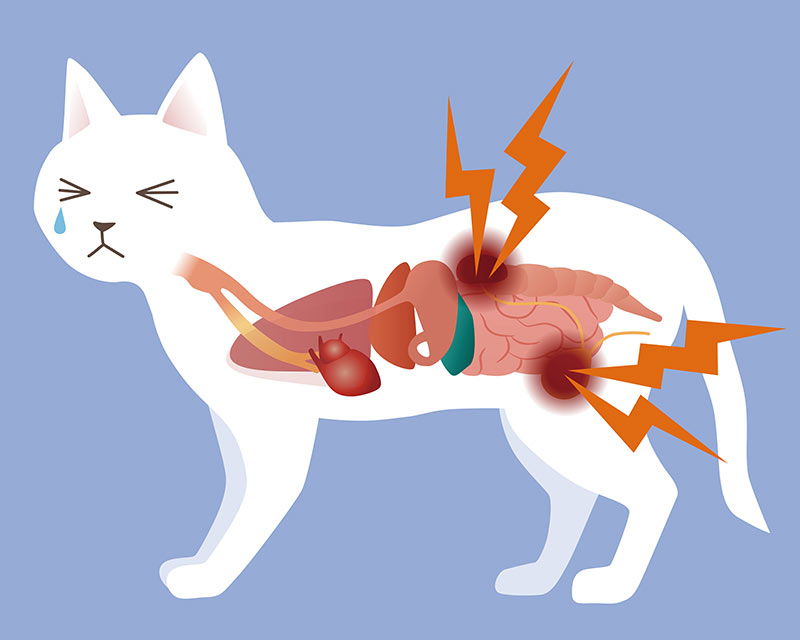
Prognosis
The prognosis for cats with uncomplicated bacterial UTI is excellent, provided they are diagnosed and treated promptly and appropriately. The prognosis for cats that have bacterial UTI caused by a predisposing medical condition is quite variable and depends largely upon correct identification and treatment of the underlying disorder.
If untreated, a cat UTI can lead to much more serious problems, including damage to the tissues of the urinary tract. Additionally, the contributing microorganisms can proliferate and infect other areas, including the kidneys and ureters, and the infection can potentially spread through the cat’s blood. This is called “sepsis” and is a life-threatening medical emergency. Because urinary tract infections are less common in males, any UTI in a male cat is considered serious and a favourable prognosis necessitates immediate medical attention.
Treatment for urinary tract infection (UTI) in cats
The primary goals of treating feline UTIs are to destroy the organisms that are causing the infection, relieve the cat’s symptoms and prevent complications. If any predisposing medical or anatomical abnormalities have been identified, these also need to be addressed. Prevention of further UTIs is another goal of treatment, as a cat that has had one UTI is more likely to have another in the future.
Typical treatment includes:
Antimicrobials / antibiotics:
- Initially, the veterinarian will prescribe an antibiotic that is commonly used for treating UTIs in order to provide immediate relief to the cat.
- Once the culture and sensitivity results are received, a different antibiotic that targets the identified bacteria may be prescribed.
- After the course of antibiotics is given, another urinalysis is performed to check if the infection has resolved.
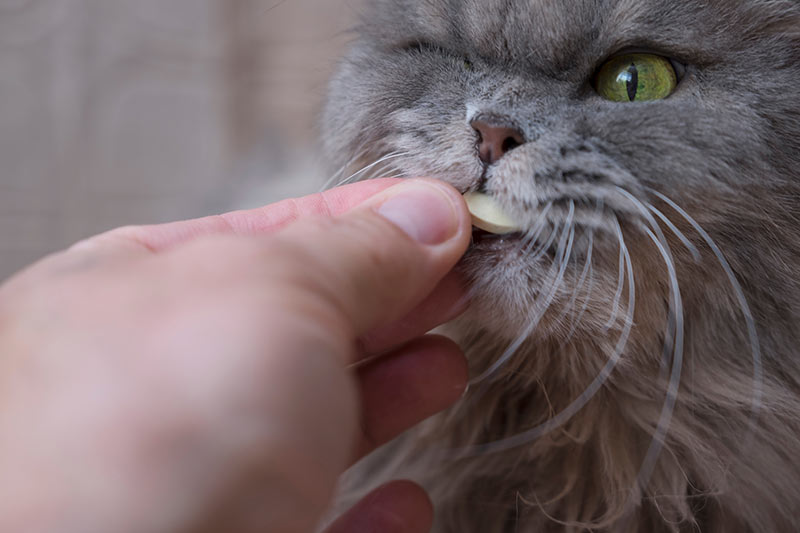
Dietary modification:
- The cat’s diet may be a contributing factor; additionally, diabetic and overweight cats are at greater risk of urinary tract disease.
- The vet may recommend dietary changes that will help to prevent UTIs and the formation of crystals in the bladder.
- Specific nutritional formulations can support lower urinary tract health may be prescribed.
Preventative measures:
- Schedule annual check-ups with the vet that include a routine urinalysis.
- Pay attention to you cat’s urinary habits so that any symptoms of UTI can be promptly identified.
- Keep the litter box scrupulously clean so that bacteria are unable to spread.
- Minimise stress – for example, play with the cat, allow plenty of exercise, provide perches and hiding places.
- Allow free access to fresh water, which will promote hydration and help flush infectious organisms out of the urinary tract.
In summary
A urinary tract infection, or “UTI”, is an infection that can develop anywhere along the cat’s urinary tract. It is typically caused by bacteria that travel up the cat’s urethra and lodge in the bladder. UTIs can occur in cats of all ages but are more common in those ten years and older. Cats with UTIs may be asymptomatic or may have symptoms relating to difficulty in urinating, such as urinating outside the litter box or frequent and painful urination.
Diagnosis is usually made based on the results of a urinalysis. If a UTI is detected early, treatment can be a simple process, entailing a course of antibiotic medication and possible dietary changes. Untreated UTIs can lead to complications which may be life-threatening, while recurrent UTIs can greatly increase the development of feline lower urinary tract disease (FLUTD). Preventative measures are important for lowering the risk of future infections.
Bow Wow Meow Pet Insurance can help protect you and your cat should an unexpected trip to the vet occur.
-
Find out more about our cat insurance options
-
Get an instant online pet insurance quote


More information
- https://vcahospitals.com/know-your-pet/urinary-tract-infections-utis-in-cats
- https://prettylittercats.com/blogs/prettylitter-blog/what-s-the-deal-with-cats-and-utis
- https://www.aspcapetinsurance.com/blog/2016/november/21/cat-uti-symptoms/
- https://www.petmd.com/blogs/thedailyvet/jcoates/urinary/2011/july/feline_urinary_issues-treating_urinary_tract_infections-11357
- https://www.merckvetmanual.com/pharmacology/systemic-pharmacotherapeutics-of-the-urinary-system/bacterial-urinary-tract-infections




